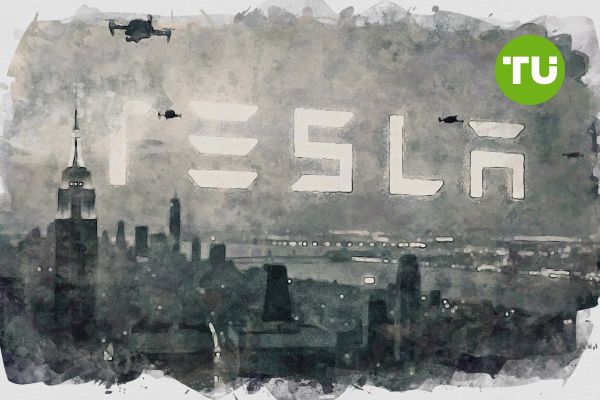Tesla stock slips 1.7% as Musk robotaxi plan faces first test
 The robotaxi initiative is scheduled to begin on June 12 in Austin, Texas
The robotaxi initiative is scheduled to begin on June 12 in Austin, Texas
As of May 29, Tesla stock is trading at $356.90, down 1.7% in the past 24 hours.
Despite the slight decline, the stock has shown significant strength throughout May, gaining more than 26% since the beginning of the month.
Highlights
- Tesla gained 26% in May but pulled back 1.7% on May 29 amid technical overbought signals.
- The stock broke above key moving averages, driven by optimism around Elon Musk’s renewed focus and the June robotaxi launch.
- Analysts see potential for further gains if the rollout meets expectations, with $430 as the next resistance target.
Short-term indicators such as the Relative Strength Index (RSI), currently hovering around 74, suggest that Tesla is entering overbought territory. This level often signals a potential for short-term pullbacks as traders look to book profits. The MACD also supports bullish momentum, having crossed above its signal line in mid-May and maintaining a widening gap since.
Tesla faces resistance at $375, with more substantial resistance at $430, a level not seen since September 2023. If upward momentum continues, the next critical resistance is at $489, which represents Tesla’s all-time high. On the downside, initial support is seen at $325, with stronger support near $289. These levels could serve as potential reentry points for traders should a correction occur.

TSLA stock price dynamics (March 2025 - May 2025). Source: TradingView.
Volume trends have also turned favorable, with several accumulation days observed over the past three weeks. This indicates institutional buying interest, often a bullish signal for sustained upward movement. The 50-day moving average ($306.30) has turned upward and may soon cross above the 200-day MA ($319.80), forming a potential golden cross—another confirmation of the positive medium-term trend.
Musk’s renewed involvement and robotaxi launch energize sentiment
Tesla’s resurgence is largely driven by improving investor sentiment following CEO Elon Musk’s commitment to focus intensively on Tesla’s operations. Recent media reports noted Musk is now "sleeping at the office again" to oversee the final preparations for Tesla’s much-anticipated robotaxi launch. This is a sharp contrast to earlier in the year, when investors expressed concern about Musk’s distractions from political and AI ventures.
The robotaxi initiative is scheduled to begin on June 12 in Austin, Texas, with a pilot fleet of 10 to 20 Model Y vehicles operating under human supervision within geofenced urban zones. This marks a significant step in Tesla's long-term vision of autonomous transportation and is being viewed as a disruptive threat to traditional ride-hailing services. While initial operations will be limited, analysts see the pilot as a credibility test for Tesla’s long-standing full self-driving (FSD) ambitions.
Cathie Wood’s Ark Invest has reaffirmed its ultra-bullish outlook, projecting Tesla shares could reach $2,600 by 2029, largely due to the projected revenues from its autonomous fleet. This optimistic view, combined with Musk’s high visibility and confidence in Tesla’s EV demand, is fueling momentum despite overall vehicle delivery expectations dropping more than 16% year-on-year.
Short-term consolidation likely, with bullish bias intact
Given the sharp gains in May and the overbought technical condition, a short-term consolidation phase is likely. The most probable range in the near term is between $325 and $375, as traders assess the real-world impact of the robotaxi rollout. If Tesla holds the breakout level above $354.99 and reclaims $375 with strong volume, the next test would be at $430.
If bullish momentum continues into and beyond the robotaxi launch, a breakout toward $489 cannot be ruled out. However, much will depend on operational execution and public perception of the initial service. Conversely, a pullback below $325 would shift sentiment toward a neutral stance and invite retesting of support at $289.
Tesla's sales in Europe dropped 49% year-over-year in April, shrinking its market share from 1.3% to 0.7%, while China sales are down an estimated 23% in early Q2. These declines highlight Tesla's struggle to keep pace with fast-growing local competitors amid rising EV adoption.













































































































































